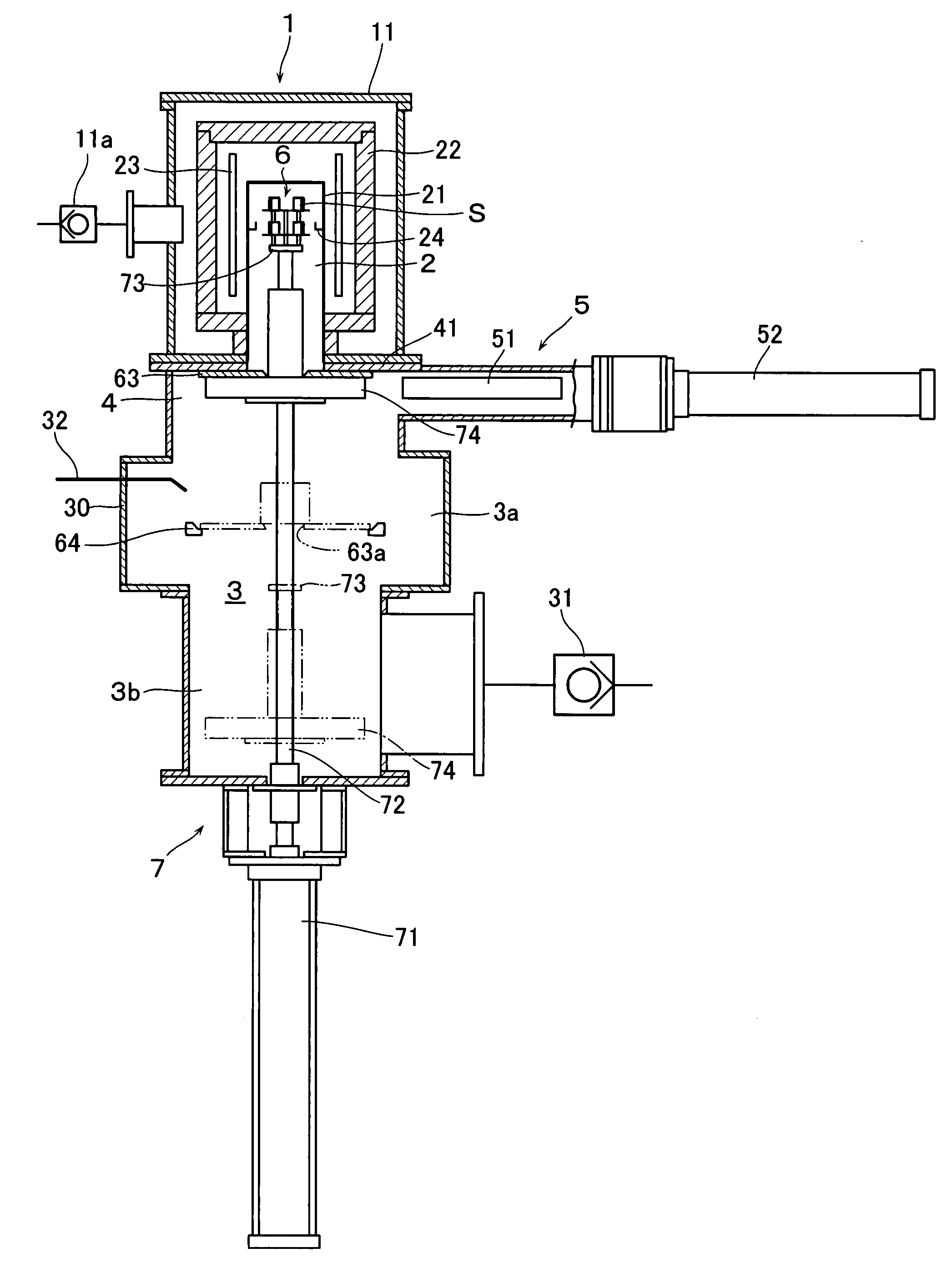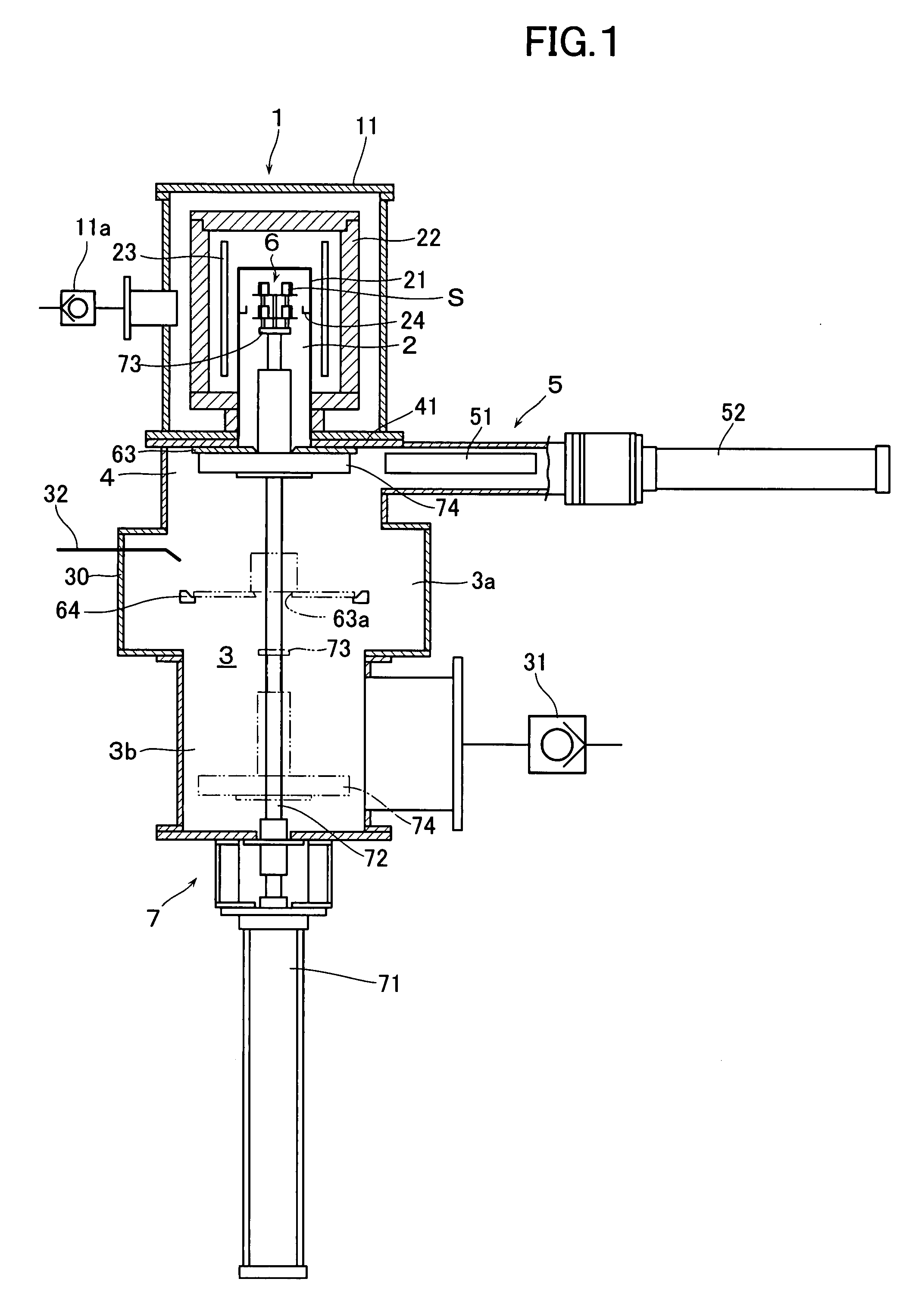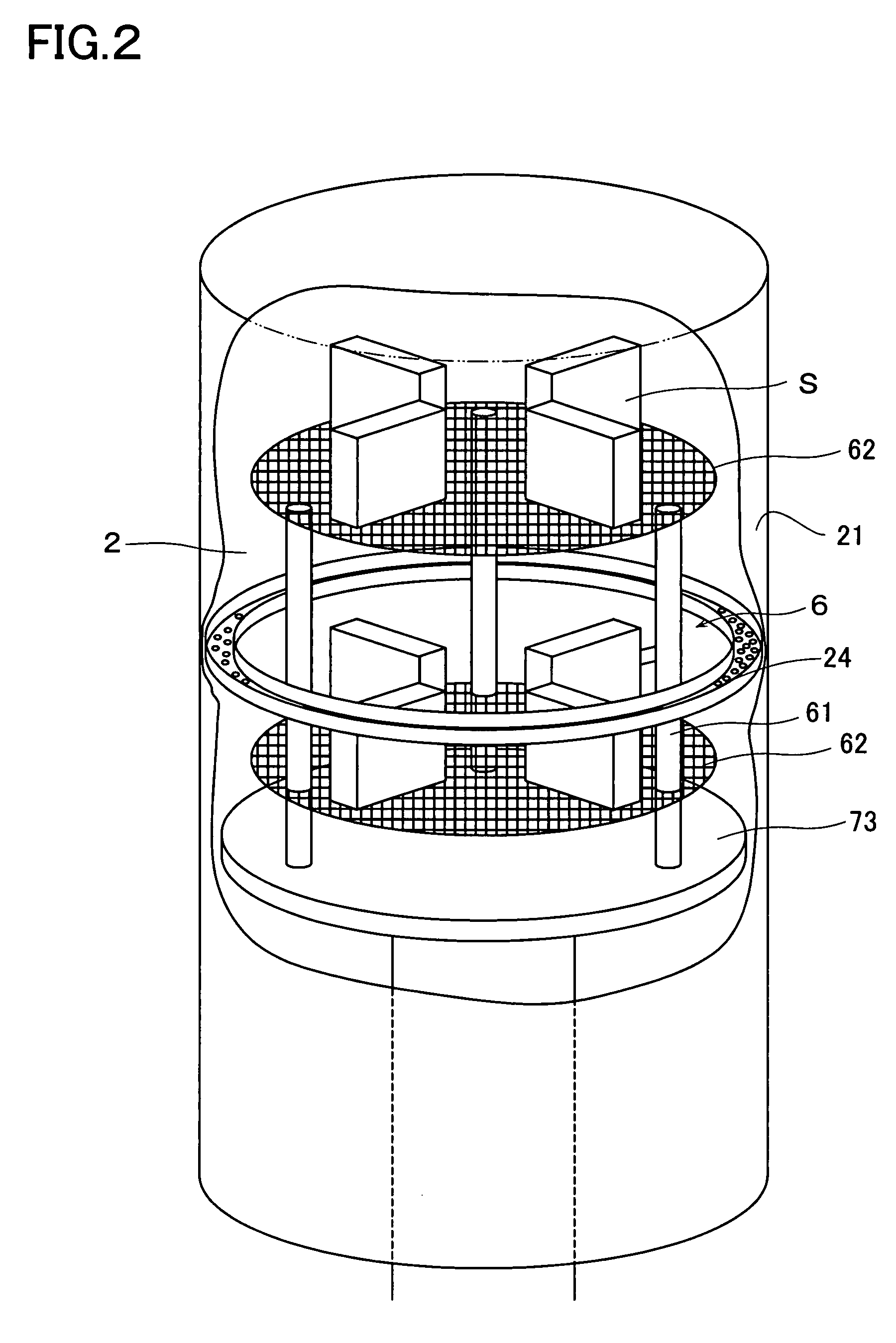Coating Method and Apparatus, a Permanent Magnet, and Manufacturing Method Thereof
a technology of permanent magnets and coating methods, applied in the direction of magnetic materials, evaporation applications, magnetic bodies, etc., can solve the problems of greatly reduced maximum energy products exhibiting magnetic properties, heat deformation, and reduced magnetic field strength, so as to achieve high efficiency, low cost, and high speed
- Summary
- Abstract
- Description
- Claims
- Application Information
AI Technical Summary
Benefits of technology
Problems solved by technology
Method used
Image
Examples
embodiment 1
[0082]Each sintered magnet of Fe—B-rare earth elements was made as a rectangular parallelopiped of 50×50×8 mm using a raw material having a composition of 31Nd-1Co-1B-0.1Cu-bal.Fe (“NEOMAX-50 manufactured by NEOMAX Co.). The surface of sintered magnet S was cleaned using acetone after having finished it as having a surface roughness of less than 20 μm.
[0083]Dy was coated on the surface of sintered magnet S using the coating apparatus 1 and method of the present invention. Dy of 99.9% degree of purity was used as the coating material and Dy of gross 500 g was laid on the receptor 24. A wire forming the mesh type supporting member 62 of the supporting means 6 is made of Mo and has a diameter of 1 mm. Then four (4) cleaned sintered magnets S were laid on each supporting members 62 on a circle of a diameter (80 mm) oppositely in a diametrical direction each other (totally eight (8) sintered magnets S were placed on two supporting members 62 of upper and lower stages. A space between the...
embodiment 2
[0087]In this embodiment 2, permanent magnets were manufactured at same conditions as those in the embodiment 1 except for that heat treatment was not carried out. However, the holding time duration of the permanent magnets within the Dy vapor atmosphere was set at one (1) minute and the temperature within the process chamber was varied. FIG. 6 is a table showing average values of a coating thickness of Dy when the coating was carried out under these conditions, and the magnetic properties of permanent magnets manufactured in this embodiment. According to this embodiment 2, it can be found that little coating is formed at a temperature lower than 1,000° C., but coating can be formed at a high speed more than 20 μm / sec at a temperature higher than 1,200° C. In this case, it is found that it is possible to obtain a permanent magnet having a maximum energy product of about 50 MG0 e of little loss and a high coercive force of 17 K0 e or more in a range of 1,100˜1,700° C.
embodiment 3
[0088]In this embodiment 3, permanent magnets were manufactured at same conditions as those in the embodiment 1 except for that pretreatment (cleaning treatment) was not carried out. However, the holding time duration of the permanent magnets within the Dy vapor atmosphere was varied. FIG. 7 is a table showing average values of the coating thickness of Dy coated with the holding time duration being varied, the maximum and the magnetic properties of permanent magnets manufactured in this embodiment. According to this embodiment 3, it can be found that a vapor depositing velocity exceeding 17 μm can be obtained and the temperature rise of sintered magnet itself is at most 743° C. although it is held for 60 seconds. In this case, it is found that it is possible to obtain a permanent magnet of high coercive force having a maximum energy product of about 50 MG0 e, a remanent magnetic flux density of 14.5 kG and a coercive force of 15.4˜21.3 K0 e.
PUM
| Property | Measurement | Unit |
|---|---|---|
| Temperature | aaaaa | aaaaa |
| Temperature | aaaaa | aaaaa |
| Temperature | aaaaa | aaaaa |
Abstract
Description
Claims
Application Information
 Login to View More
Login to View More - R&D
- Intellectual Property
- Life Sciences
- Materials
- Tech Scout
- Unparalleled Data Quality
- Higher Quality Content
- 60% Fewer Hallucinations
Browse by: Latest US Patents, China's latest patents, Technical Efficacy Thesaurus, Application Domain, Technology Topic, Popular Technical Reports.
© 2025 PatSnap. All rights reserved.Legal|Privacy policy|Modern Slavery Act Transparency Statement|Sitemap|About US| Contact US: help@patsnap.com



